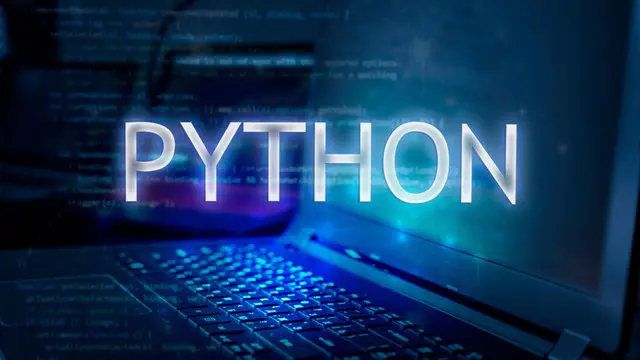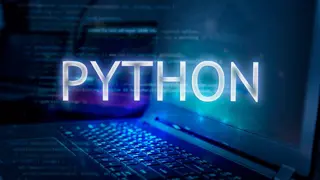
Python:Python A to Z
4 Free Skill Development Courses | Free eCertificate | Expert Video | Tutor Support
Frontier Education
Summary
- Reed courses certificate of completion - Free
- Tutor is available to students
Add to basket or enquire
Overview
**4 Free Courses **
Courses included in this Python Programming course
Course 1: Python Complete Course
Course 2: Goal Setting Skills
Course 3: Mindfulness Meditation
Course 4: Time Management
Course 5: Microsoft Access: Tables and Queries
Course 6: SQL Queries
Python is fundamental skill for competitive industries like analytics, artificial intelligence, cybersecurity, and data science. And, thanks to its intuitive, readable syntax, it’s also one of the easiest languages to learn on the market.
The course teaches the fundamentals to advanced of programming with Python and you will learn about the building blocks of the language and work with examples.
This python includes a whole host of practical tips and advice, helping you to develop your python programming skills to become the professional python developer or related profession you can be.
Packed with videos, PDFs and exercises, it'll equip you with what it takes to be a successful professional python developer in today’s business landscape, covering a broad range of topics, from basic & advanced data types to python control flow.
Certificates
Reed courses certificate of completion
Digital certificate - Included
Will be downloadable when all lectures have been completed
Curriculum
-
Python Course Intro 51:14
-
Getting Familiar with Python 1:14:09
-
Python Data Types 1:29:33
-
Python Operators 52:39
-
Python Advance Data Types 45:58
-
Python Control Flow 1 56:19
-
Python Control Flow 2 31:07
-
Intro to Functions 29:45
-
Use Input and Error Handling 41:09
-
Advanced Functions 1:03:15
-
Scripting and Libraries 1:07:41
-
NumPy 58:12
-
Pandas 1:30:23
-
Intro to OOP 41:02
-
Advanced OOP 1:14:09
-
Career in Python 1:04:27
-
Resources 05:38
-
Goal Setting Skills 1:08:19
-
Mindfulness Meditation 1:18:26
-
Time Management 2:20:53
-
Microsoft Access :Tables and Queries 3:32:29
-
SQL Queries 57:18
Course media
Description
With expert guidance and a combination of videos, PDFs, and worksheets, this course will enable you to develop your python development, become a web developer and unlock your full potential.
Both total beginners who have never programmed before and experienced programmers who want to learn Python to broaden their job options are welcome to enrol in this course. Python, one of the most well-liked programming languages now in use, is employed by large businesses.
Python is the most widely used language for data science, machine learning, and artificial intelligence. Python, which you will study in this course, must be fully understood in order for you to be qualified for jobs with such high salaries.
After completing the course, you'll be capable of applying with confidence for Python programming jobs. Regardless of programming experience, you can still utilise this. By honing the abilities you will learn in this course, you may make yourself more marketable and useful to potential employers.
Course Curriculum :
1: PYTHON COURSE INTRO
This intro section gives you a full introduction to the Python industry and marketplace, job opportunities and salaries, and the various Python job roles.
- - Python Industry and Marketplace
- - Python Job Opportunities
- - Landing a Job w/o a Degree
2: BASIC/ADVANCED DATA TYPES
This section gives you a full introduction to the Python basic and advanced data types with hands-on step by step training.
- - Python Variables
- - Integers, Floats, and Complex Numbers
- - Strings
- - Operators
- - Lists, Tuples, Sets & Dictionary
3: PYTHON CONTROL FLOW
This section gives you a full introduction to the Python Control Flow with hands-on step by step training.
- - Basic/Complex Conditional Statements
- - For Loops, While Loops
- - Break/Continue Statements
- - Zip/Enumerate Keywords
4: BASIC/ADVANCED FUNCTIONS
This section gives you a full introduction to the Python basic and advanced functions with hands-on step by step training.
- - Help/Defining Function
- - Error Handling
- - Variable Scope
- - Doc Strings
- - Lambda Functions
- - Iterators + Generators
- - Map/Filter Functions
5: SCRIPTING & LIBRARIES (includes numpy, pandas)
This section gives you a full introduction to the scripting and libraries with hands-on step by step training.
- - Scripting Basics
- - Python IDEs
- - Python Text Editors
- - Third Party Libraries
- - Numpy + Pandas
- - Data Visualization
- - Webscraping
6: STARTING A CAREER IN PYTHON
This section gives you a full introduction to starting a career as a Python Programmer with hands-on step by step training.
- - Building a Brand
- - Personal Branding
- - Freelancing + Freelance websites
- - Importance of Having a website
- - Networking
- - Creating a Resume
Who is this course for?
This python programming course is ideal for people looking to progress their career into a professional python developer, for those who want to become web developers, as well as looking to further develop their skills and knowledge.
Requirements
No prior experience required
Questions and answers
Currently there are no Q&As for this course. Be the first to ask a question.
Reviews
Legal information
This course is advertised on reed.co.uk by the Course Provider, whose terms and conditions apply. Purchases are made directly from the Course Provider, and as such, content and materials are supplied by the Course Provider directly. Reed is acting as agent and not reseller in relation to this course. Reed's only responsibility is to facilitate your payment for the course. It is your responsibility to review and agree to the Course Provider's terms and conditions and satisfy yourself as to the suitability of the course you intend to purchase. Reed will not have any responsibility for the content of the course and/or associated materials.


